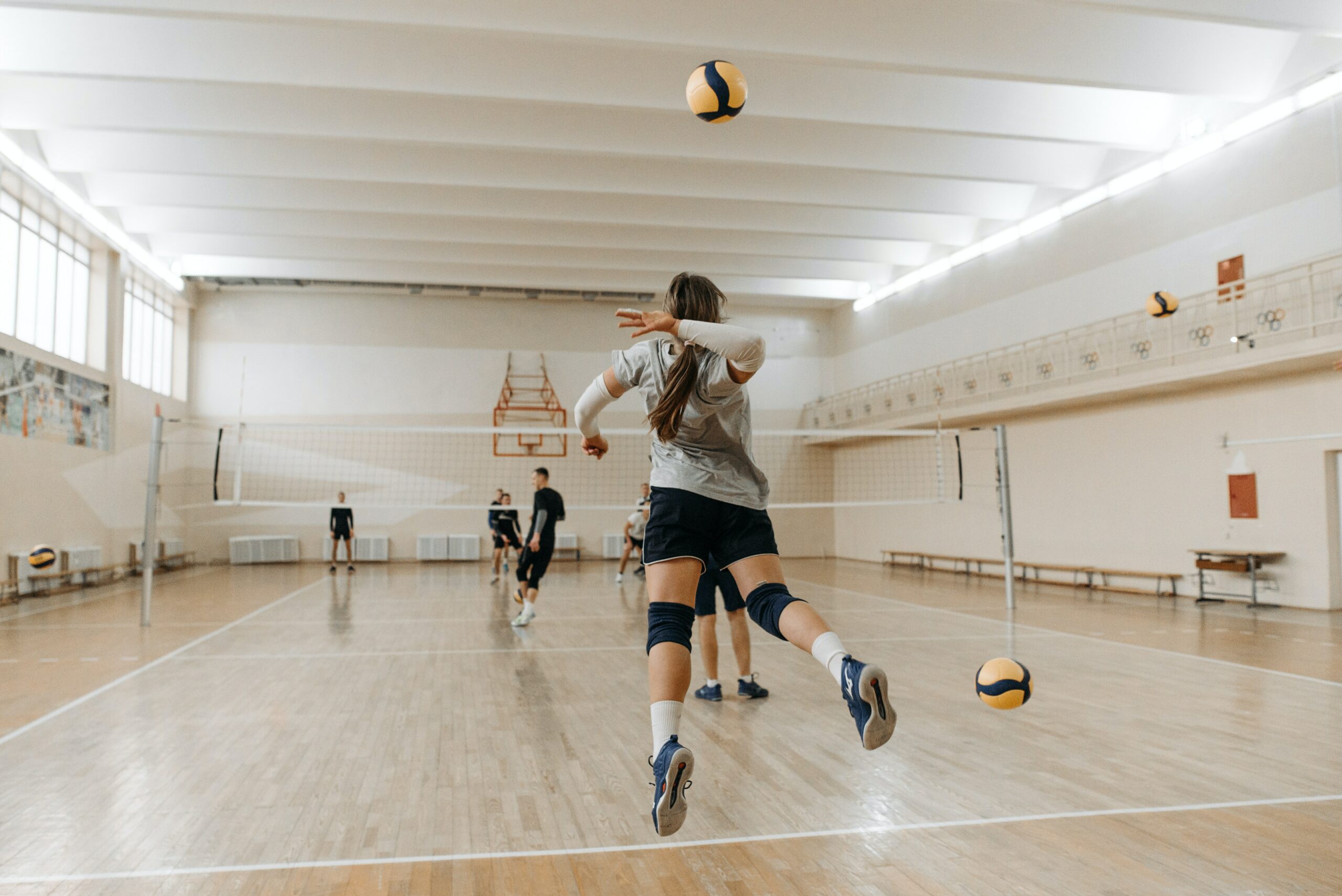Volleyball is a challenging sport to master, and it’s not for the faint of heart. In this sport , technique is the most crucial factor. This focuses on the skills that a player requires to handle the ball and be ready to compete at their highest level. ‘ Learning the tactics takes a long time, which is why they are so crucial in the sport.
Every player’s technique must be correct for the team to succeed. No squad can focus on the results that they and their coach are aiming for. We need to work on six abilities to be successful . Attack, defense in the field, and reception are all part of their repertoire of skills.

These are the skills that we work on in practice. Step-by-step is the only way to get the job done. Start with the most fundamental aspects , before moving on to more advanced concepts. The position you play has an impact, too.
When we practice, we undertake position-specific training, whether for a spiker, opposing player, setter, middle blocker, or libero. Each function has specific skills and knowledge requirements, and each role has its own set of requirements. Should describe individual talents in detail.
Attack:
Volleyball’s most important aspect has always been its offensive aspect, which hasn’t changed throughout time. You’re doomed if you don’t launch an attack. Since our attack accounts for most of our points, we devote a substantial amount of time to perfecting it throughout practice sessions.
When we attack, we use our jump and power to hit the ball as hard as possible. Technical strikes, tips behind the block, and power tips are all forms of offense that can be used in addition to strength and power. Our goal is to spike right next to, over, or around the block to win a point.

To make a point out of some sets that aren’t perfect is quite challenging. After a good or terrible set, we may also discern attacks. High-speed, side-to-side transition, pipe to the spiker, settings for middle blockers, and back-row attack for the opposite are all examples of transition balls.
The offensive plan of the team and the individual abilities of the attackers also play a significant impact. Developing into an excellent attacker takes a long time, yet the attack is our most potent instrument.
Block:
Blocking is a powerful tool that can help us earn points . To block, we leap from the ground or take a quick step backward. As our primary objective, we must bring our opponent to the ground with a single block. In addition to slowing the ball down, the block is intended to force the attacker to spike the ball in the direction of the opposing team’s defense.
We need to remain calm in the block and jump with our arms as far over the net as possible to cover as much of the court as feasible. Those who specialize in blocking are middle blockers, as they are the ones who are most involved in blocking. When we block alone, we have the option of creating our blocks. Double, triple, or even quadruple blocking can protect middle blockers from the attacking middle blocker.

In addition to field defense in volleyball , blocking is an aspect of a defensive play as a whole. Cooperation with the defense in the field is essential because we can’t block everything. Blocking, like attacking, is a complex technique to master. We have just a limited amount of time in which to accomplish our objectives.
Serve:
A Serve is the most important step in volleyball . All of us must help others. For a long time, service was merely a prelude to a rally, but that has changed. In the past few years, the service’s role has evolved from merely putting the ball into play to immediately putting the opponent under pressure. It is the team’s first attack in contemporary Volleyball.

However, serving isn’t just about strength; we may also use float serves from the ground or with a leap. Our service is usually aimed at the weakest receiver on the other team or between spikers. Serve is a powerful weapon that, when used in conjunction with attack and defense, can help us gain valuable points.
Set:
After every serve reception or defense in the field, we have the opportunity to set. If I’m the setter, we can do a jump set or set from the ground if other players are involved. The setter must set all attacking players, including spikers on the sides, middle blocks on rapid sets, and opposites on back sets. A team always has a setter, a specialist who knows the best manner to set the ball.
If the setter has to chase after the ball or is too low for an overhead hit, they can use a Bagher instead. In the field of play, Defense on the field is a component of defense, along with blocks. We bend our knees to be ready to dig any ball that comes our way in the field. Defenders in the field don’t score directly, but they prevent their opponents from achieving now when defending an assault.
It also allows us to launch a counter-offensive against them. Libero’s are the best defenders on the field, but everyone else has to do their part. We play defense according to our locations on the field. We use Bagher, overhead hit, dive, or other body sections if a hard spike is coming. To be a successful team, we must have a strong defense on the field.
Reception:
It’s crucial to remember that reception is just as critical as the other three stages. After the other team serves, the game shifts to receiving. Bagher and overhead strikes are the most prevalent ways in which we get stuck. We expect a spike or float to land on us during the reception.

The reception of an opponent’s service is done in a bent position to pass the service to the net. Spikers and libero’s are two of the best receptionists in the game. As in field defense, our goal is not to lose a point and to put the ball in the best possible position for the setter. It’s never just about one player’s reception.
Afloat serve requires at least two players, while a jump serve necessitates three or four participants. At the beginning that Volleyball is a challenging sport. Every talent has a variety of sub-skills, variants, and unique techniques that must be mastered.













